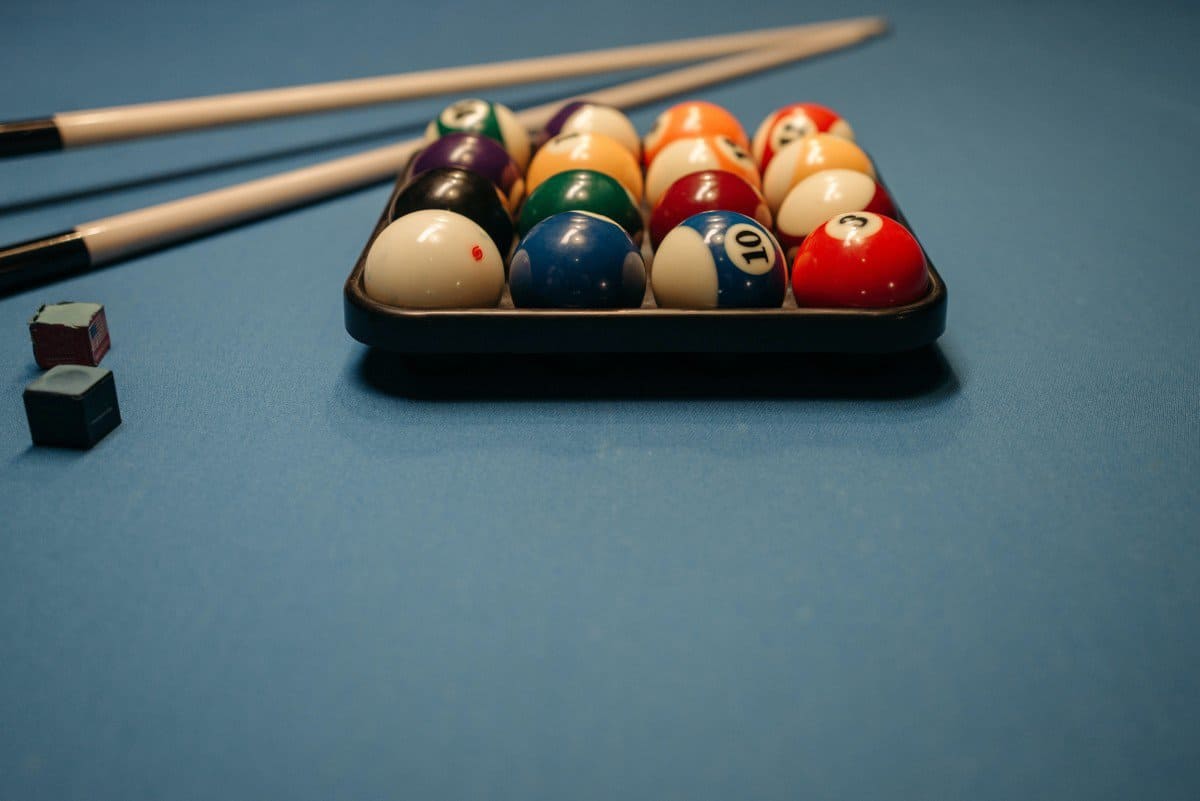Pool, or billiards, is an incredibly popular hobby and even professional sport. You have likely played at least a game or two over the years, and might even know quite a bit about it. However, most people don’t know how pool balls are made. So let’s find out!
Almost all pool balls these days are made of phenolic resin, though some are made from polyester, Bakelite, or ivory. Making pool balls is a time-consuming task that requires 13 steps over the course of 23 days of melting, molding, reheating, and painting.
If you want to learn all about how pool balls are made, this is the article you were looking for! We have tons of interesting facts about pool balls that are going to blow your mind! And by the end, you will be able to consider yourself a pool ball expert.
What Are Pool Balls Made Of?
The very first thing to understand about pool balls is the material used to create them.
As you now know, almost all pool balls being used today are made of phenolic resin, and for good reason! Phenolic resin is a combination of phenol and formaldehyde that form a durable yet malleable material.
Although some are made of polyester, phenolic resin balls are known for being much higher quality than those made of polyester.
It’s important to understand that the game of billiards has been around since the 14th century, and at that time, they did not use the chemical reaction between phenol and formaldehyde to make the balls. They used Bakelite or even ivory.
While you can still find some balls made of Bakelite and ivory, they are usually incredibly expensive. Phenolic resin balls feel and play like Bakelite balls, but at a much more affordable price point.
How Are Pool Balls Made?
Now, comprehending exactly how pool balls are made is a little tricky. It’s actually an incredibly complicated and long process, and the exact instructions are not widely known or understood.
What we do know is that standard phenolic resin pool balls take 23 days to make, and the process includes 13 distinct steps.
The resin needs to be melted at extreme temperatures and pressure, then molded to shape. However, this step needs to be completed with intense accuracy in order for the center of gravity to stay in the middle of the ball.
Interestingly, phenolic resin pool balls do not have to be painted. The color is mixed into the material before being molded!
After the balls have been molded, the numbers are etched out, then filled once again with black resin.
Finally, they are then sanded and polished. This process is delicate and needs to be done perfectly for the pool balls to be considered ready for the game.
The balls need to be perfect spheres that will not scratch or chip in order to be used in the game. Any defects in the surface mean that the ball will not roll accurately, and therefore, can affect the play of the game.
Quality Control of Pool Balls
While the making of pool balls is tedious and precise work, it’s really the quality control that makes the process so long.
Even once the entire procedure of creating the balls is complete, they must pass various tests including, density, balance, surface polish, roundness, diameter measurements, and color precision.
Every ball you see has met the World Pool-Billiard Association’s requirements which states that they must weigh between 160-170 grams and have a diameter of 57.15 millimeters with only a 0.13 millimeter margin of error on either side.
Who Makes Pool Balls?
As you can see, making pool balls is not an easy task. So it probably comes as no surprise that not many people or even companies have taken on the job of making them.
These days, there is essentially one company that makes all the pool balls you see at billiards halls, recreation centers, at your friend’s houses, and even in professional tournaments.
The Belgium company of Saluc makes over 85% of the world’s pool balls, and they use the 13 step method with phenolic resin to do so.
Most pool players agree that Saluc pool balls are the best when it comes to durability, precision, and longevity.
The Bottom Line
Hopefully, you now understand how pool balls are made, and why they are so difficult to produce.
At the end of the day, it takes a whole lot of work to mold, shape, and produce absolutely perfect pool balls. However, it is completely necessary to the game that the process is done by an expert.
So, although you are not likely to ever make your own pool balls, you’re about as close to an expert as you can get without actually working at Saluc.

